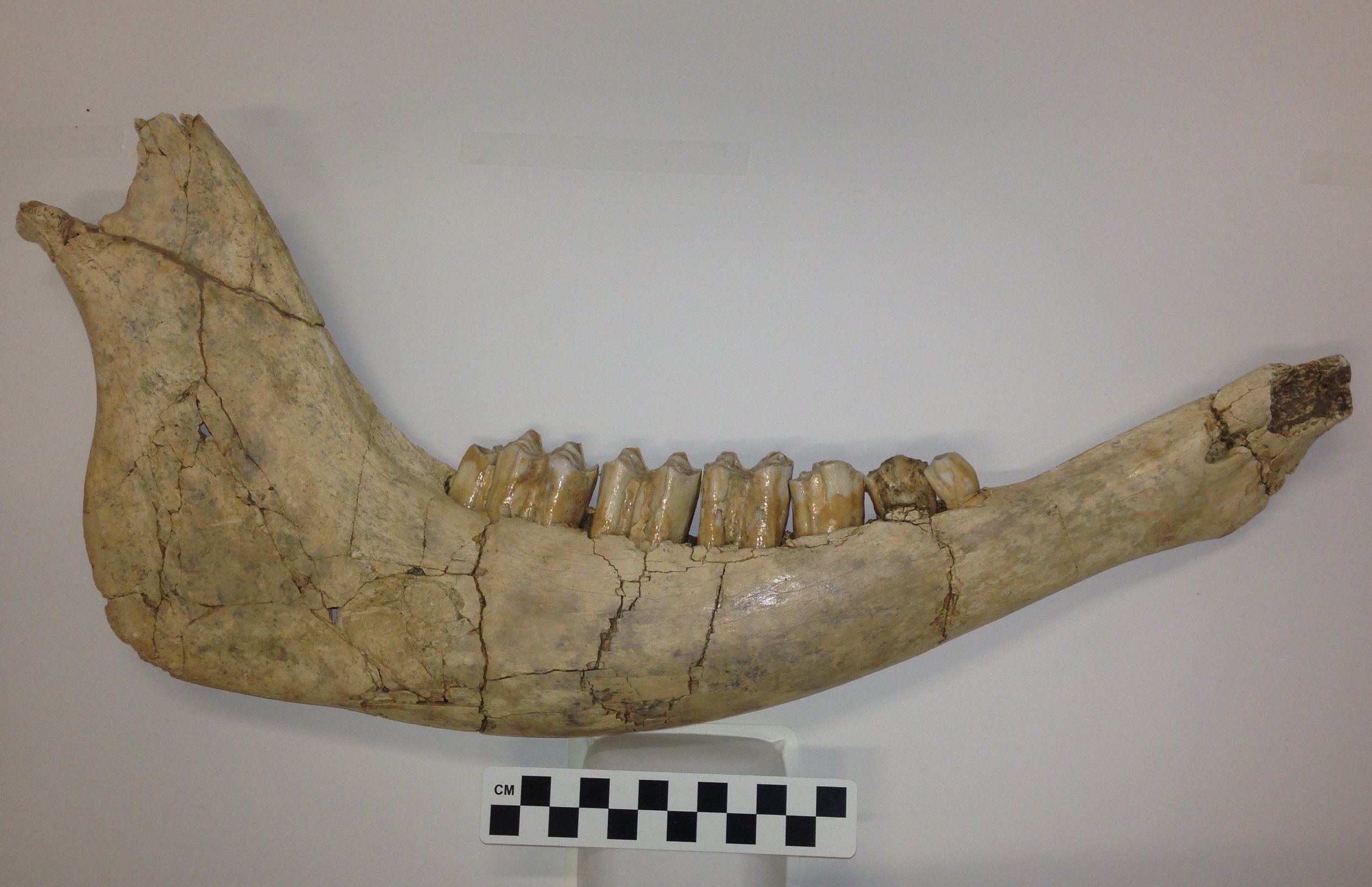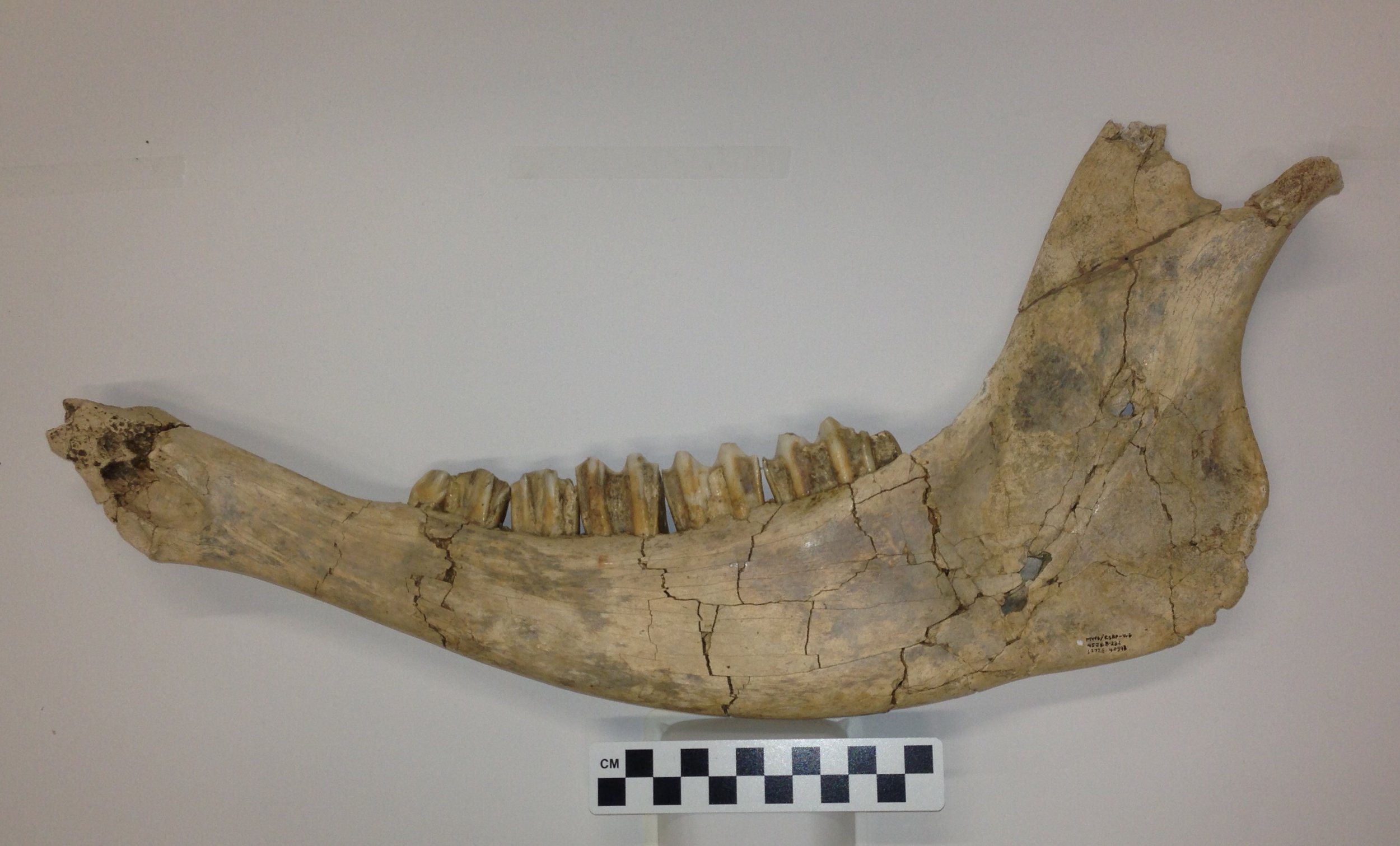 While the Diamond Valley Lake deposits didn't produce anything close to a complete skeleton of a bison, their bones are still among the most common from large animals in the valley, and many of them are well preserved.This is the right side of the lower jaw of Bison antiquus, the smaller of the two Pleistocene bison species from California. Mammals are unique in that each half of the lower jaw is made up of a single bone, called on he dentary, so above is the lateral view of the right dentary. Here's the medial view of the same bone:
While the Diamond Valley Lake deposits didn't produce anything close to a complete skeleton of a bison, their bones are still among the most common from large animals in the valley, and many of them are well preserved.This is the right side of the lower jaw of Bison antiquus, the smaller of the two Pleistocene bison species from California. Mammals are unique in that each half of the lower jaw is made up of a single bone, called on he dentary, so above is the lateral view of the right dentary. Here's the medial view of the same bone: The bone is missing the anterior tip and part of the coronoid process (at the very top), but otherwise is essentially complete. Since the anterior end is absent, the incisor teeth located there are also missing, but otherwise we have the complete dentition. This includes the 2nd, 3rd, and 4th premolars (bison have lost the 1st premolar), and the 1st, 2nd, and 3rd molars. Below is an occlusal view, showing the chewing surfaces of the teeth:
The bone is missing the anterior tip and part of the coronoid process (at the very top), but otherwise is essentially complete. Since the anterior end is absent, the incisor teeth located there are also missing, but otherwise we have the complete dentition. This includes the 2nd, 3rd, and 4th premolars (bison have lost the 1st premolar), and the 1st, 2nd, and 3rd molars. Below is an occlusal view, showing the chewing surfaces of the teeth: This is a complete set of permanent teeth, so this jaw represents an adult animal, although the moderate wear suggests that it was more likely middle-aged than elderly.This dentary is currently on display at the Western Science Center in the Stories from Bones exhibit.
This is a complete set of permanent teeth, so this jaw represents an adult animal, although the moderate wear suggests that it was more likely middle-aged than elderly.This dentary is currently on display at the Western Science Center in the Stories from Bones exhibit.
